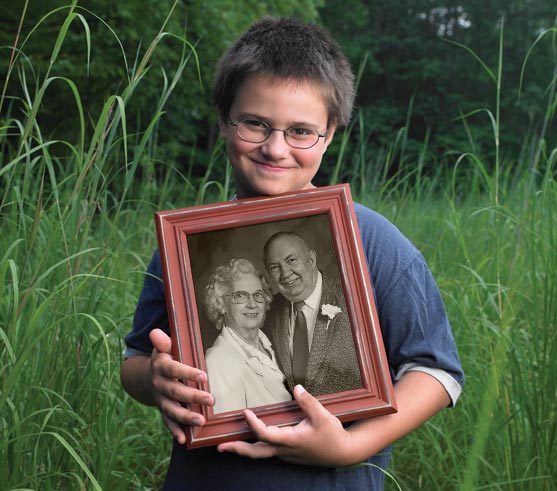
Cleveland Metroparks was a wonderland for marguerite and warwick buer, who found great pleasure in their favorite pastime– trekking through the reservations’ hundreds of miles of hiking trails. In 2007, after Marguerite’s death, Warwick named the Emerald Necklace Endowment Fund as a beneficiary of their estate, for the creation and preservation of park trails. He died the following year. But their generous gift lives on. In 2009, the new Lake to Lake Trail in the Big Creek Reservation opened. For kids like joe d’amico, age 9, the parks are his own vast playground, where he loves to ride his bike or play catch on a nice day.
We value our citizens
From Little Italy to Fairfax to Slavic Village, Cleveland has long boasted distinctive neighborhoods full of character and culture. Many neighborhoods have gone through highs and lows over the last century, and always the foundation has been there to keep them moving forward. Our efforts over time have ranged from helping build University Circle into a cultural epicenter, to easing racial tensions during the 1960s, to forming modern-day community development corporations to lead revitalization. Today, we are helping create opportunities for good jobs and business ownership in neighborhoods, so residents can move forward powerfully on their own. We also are providing them with training that will help them succeed in new jobs and careers. Read more about our plans to strengthen neighborhoods and empower neighbors with new housing, businesses, and jobs at www.ClevelandFoundation.org/Housing


an even greater university circle Through unprecedented collaboration among key stakeholders, Greater University Circle – the seven Cleveland neighborhoods in and around University Circle – is taking shape as a premier place to live, work, play, visit, and receive medical care in Cleveland.
Our initiative in this hub is making progress on multiple fronts. Along with various partners, we have created Greater Circle Living, a program that provides mortgage and home-repair assistance to low- and moderate-income families who work and live in the area. We also are enhancing local public school options and developing programs to bolster neighborhood safety and security.
new jobs, new wealth One of our most promising strategies is to foster economic inclusion – jobs for all – in Greater University Circle. In partnership with leading institutions, local philanthropies, and community groups, we are investing in the startup of for-profit businesses that will serve the needs of anchor institutions and create opportunities for wealth for local residents who work in and own a piece of these “green” businesses.
Our first cooperative business has already launched. The Evergreen Cooperative Laundry opened in October 2009 as the first industrial-scale, LEED-certified green laundry in Northeast Ohio. Initially, this employee-owned company is serving the area’s health care institutions, nursing homes, and hotels. Plans call for hiring 50 low- and moderate-income residents who will vest over time to become employee owners. Two more employee-owned cooperatives also are taking shape: Ohio Cooperative Solar will install solar panels and perform weatherization, and Evergreen City Growers will grow produce on a large scale in a year-round hydroponic greenhouse.
building careers and hope We are making significant progress on opening the Cleveland Center for Arts and Technology. Patterned after Pittsburgh’s successful Manchester Bidwell training center, our center will help adults retrain themselves for new careers in readily available jobs in some of Cleveland’s most respected institutions, including the Cleveland Clinic and University Hospitals. The center also will feature programs to embrace at-risk youth through quality after-school offerings that incorporate arts and technology, aimed at instilling in them a love for learning and a desire to stay in school, graduate, and go to college. The center is on track to open in early 2010.
reconstructing neighborhoods With so many vacant homes in Cleveland, the foundation is researching ways to turn this escalating problem into an opportunity. We have funded a few pilot deconstruction projects, where skilled men and women have taken down old, abandoned homes, piece by piece, to carefully collect valuable materials for reuse. Not only does this technique divert materials that would ordinarily end up in a landfill and put them to productive use, it has the potential to create jobs for economically depressed areas. The foundation is working with partners to discern if our deconstruction method can be brought to scale and replace the current practice of demolition across the city.
